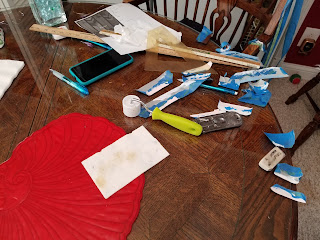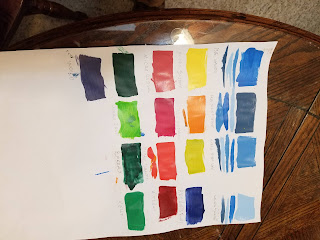Please keep in mind,,, these blogs update at the top, so the bevinning of the story is at the bottom. Let me walk you through creating a quilt, starting with the wood. I'll come back and add photos as they get transferred to my computer. This morning I went to the lumber yard and purchased a 4'x8' piece of 1/2" thick CDX plywood. The surface isn't perfect, but it's not expensive ($28) including being cut into sections. Once I make a few cuts I will have one 48" square panel, 2 24" square panels, 3 16" panels and , if I decide to go that far, 6 8" square panels. First step is applying waterproof sealant. This may be overkill, but helps assure the plywood will weather well. Tomorrow I will apply a primer (any old exterior grade house paint) and apply painter's caulk to the edges. That creates additional water seal at the exposed edges. More to follow.














